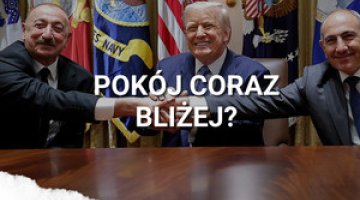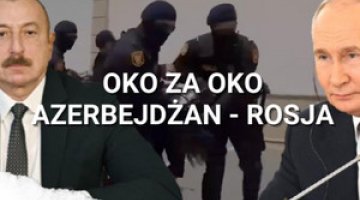The end of the stalemate in the Armenia-Azerbaijan peace process?
On 7 December, the offices of Armenia’s Prime Minister Nikol Pashinyan and Azerbaijan’s President Ilham Aliyev announced in a joint statement that the ongoing talks had resulted in an agreement on concrete steps to strengthen mutual trust. As goodwill gestures, the two parties promised to release prisoners of war (32 Armenian and 2 Azerbaijani) and to support each other’s candidates to the bodies of the forthcoming Conference of the Parties to the United Nations Framework Convention on Climate Change (Armenia expressed its support for Azerbaijan's bid to host next year's CoP).
Armenia and Azerbaijan also called on the international community to support their efforts to develop additional confidence-building measures in the near future. According to the statement’s authors, “there is a historic chance to achieve long-awaited peace in the region”. The document stressed that Armenia and Azerbaijan had reaffirmed their willingness to normalise their relations, which would culminate in a peace treaty based on respect for each other’s sovereignty and territorial integrity.
The joint statement received much praise in the West. The President of the European Council, Charles Michel, called it a major breakthrough in relations between Armenia and Azerbaijan; in particular, he welcomed the release of prisoners of war and the “unprecedented opening in political dialogue”. At the same time, he stressed that this enhanced dialogue is a key objective of the EU-led peace process, and called on the two countries’ leaders to finalise the peace treaty as soon as possible. The EU’s High Representative for Foreign Affairs and Security Policy, Josep Borrell, and the spokesperson for the US State Department, Matthew Miller, made similar remarks. The Russian foreign ministry welcomed the statement “with satisfaction”.
Commentary
- Azerbaijan’s military operation, which liquidated the self-proclaimed Republic of Nagorno-Karabakh and the accompanying exodus of the territory’s entire Armenian population in September this year (see ‘Exodus of Armenians from Nagorno-Karabakh’) led to the suspension of official contacts between Armenian and Azerbaijani officials and a de facto freeze of the peace process that had been ongoing since 2021. Aliyev and Pashinyan had been scheduled to meet in Granada on the sidelines of the summit of the European Political Community (5 October), and in Bishkek on the margins of the summit of the Commonwealth of Independent States (13 October), but neither meeting took place. In parallel to the freeze in dialogue at the highest level, Azerbaijan stepped up its pressure on Armenia with the aim of unblocking the transport routes that would connect it to the Nakhchivan exclave (the so-called Zangezur corridor) and also escalated its demands in the border disputes with Armenia. This made the threat of an Azerbaijani attack on Armenia’s sovereign territory more likely (see ‘Another war or a deal? A new phase in the Azerbaijani-Armenian conflict’). At the same time, there were indications that unofficial talks had been taking place all the time, but the public was not informed about them – as the joint statement confirmed.
- Much suggests that the negotiations between representatives of the Aliyev and Pashinyan administrations were taking place under the aegis of the EU, or at least with some support from it. Signs of the EU’s involvement included the frequent visits by senior Armenian and Azerbaijani officials to Brussels and the EU’s enthusiastic response to the joint statement in Michel’s remarks, as well as the much more restrained reaction from Russia. If this was indeed the case (although the statement makes no mention of any intermediaries, and asks for support from the international community as a whole) it is likely that a possible agreement between Armenia and Azerbaijan could still be concluded under the EU’s auspices. This would need to happen in the coming months: elections to the European Parliament will take place in June 2024 and changes in key positions within the EU will follow. The EU has seized the initiative in the peace process from Russia since late 2021/early 2022, and both sides apparently regard it as the least controversial and most trustworthy ‘broker’. Azerbaijan has only rejected the idea that the talks in the Brussels format should include the president of France, a country which has openly supported Armenia: the summit in Granada failed to take place as a result of the controversy over this issue. For its part, Armenia is not interested in any agreement that would be guaranteed by Russia: this was why Pashinyan skipped the CIS summit in Bishkek in October (see ‘Competing peace formats. Russia and the EU’s attitudes towards the Armenian-Azerbaijani conflict’).
- Although the joint statement appears to have broken the long-standing deadlock, and should be considered as a far-reaching document that could indeed offer hope for a lasting agreement, the success of the peace process is not guaranteed. The leaders of the two countries have not signed the document and no new summit has been announced. However, the threat of another war has certainly receded for the time being, especially as the two sides are set to hold further talks as mentioned in the statement. It is quite possible that relations between Armenia and Azerbaijan will reach a turning point in the coming months; the more likely scenario is that the two countries will conclude a peace treaty and establish diplomatic relations, which would certainly be followed by the normalisation of Armenian-Turkish relations. Nevertheless, the option of war still cannot be ruled out completely, as Azerbaijan might try to ‘carve out’ a corridor to the Nakhchivan exclave, a move which would trigger border clashes. Aliyev will need a swift outcome that he could tout as a success for Azerbaijan in the context of the early presidential elections scheduled for 7 February 2024, which he also announced on 7 December. He is eligible to run once again as there are no term limits in Azerbaijan.





